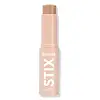What's inside
What's inside
 Key Ingredients
Key Ingredients

 Benefits
Benefits

No benefits
 Concerns
Concerns

 Ingredients Side-by-side
Ingredients Side-by-side

Water
Skin ConditioningIsododecane
EmollientDimethicone
EmollientIsononyl Isononanoate
EmollientButylene Glycol
HumectantPhenyl Trimethicone
Skin ConditioningGlycerin
HumectantPEG-10 Dimethicone
Skin ConditioningPEG-9 Polydimethylsiloxyethyl Dimethicone
EmulsifyingPentylene Glycol
Skin ConditioningVinyl Dimethicone/Methicone Silsesquioxane Crosspolymer
Phenoxyethanol
PreservativeDisteardimonium Hectorite
StabilisingAlumina
AbrasiveAluminum Hydroxide
EmollientAcrylates/Dimethicone Copolymer
Skin ConditioningCaprylyl Glycol
EmollientPropylene Carbonate
SolventDisodium EDTA
Ethylhexylglycerin
Skin ConditioningNiacinamide
SmoothingPanthenol
Skin ConditioningTocopheryl Acetate
AntioxidantCaprylic/Capric Triglyceride
MaskingSodium PCA
HumectantUrea
BufferingTriethoxycaprylylsilane
Trehalose
HumectantHexylene Glycol
EmulsifyingPolyquaternium-51
Skin ConditioningTriacetin
AntimicrobialUndaria Pinnatifida Extract
Skin ConditioningSodium Hyaluronate
HumectantIron Oxides
CI 77891
Cosmetic ColorantCI 12085
Cosmetic ColorantCI 15850
Cosmetic ColorantCI 19140
Cosmetic ColorantCI 42090
Cosmetic ColorantCI 45410
Cosmetic ColorantCI 73360
Cosmetic ColorantWater, Isododecane, Dimethicone, Isononyl Isononanoate, Butylene Glycol, Phenyl Trimethicone, Glycerin, PEG-10 Dimethicone, PEG-9 Polydimethylsiloxyethyl Dimethicone, Pentylene Glycol, Vinyl Dimethicone/Methicone Silsesquioxane Crosspolymer, Phenoxyethanol, Disteardimonium Hectorite, Alumina, Aluminum Hydroxide, Acrylates/Dimethicone Copolymer, Caprylyl Glycol, Propylene Carbonate, Disodium EDTA, Ethylhexylglycerin, Niacinamide, Panthenol, Tocopheryl Acetate, Caprylic/Capric Triglyceride, Sodium PCA, Urea, Triethoxycaprylylsilane, Trehalose, Hexylene Glycol, Polyquaternium-51, Triacetin, Undaria Pinnatifida Extract, Sodium Hyaluronate, Iron Oxides, CI 77891, CI 12085, CI 15850, CI 19140, CI 42090, CI 45410, CI 73360
Diisopropyl Dimer Dilinoleate
EmollientLauryl Laurate
Skin ConditioningCaprylyl Methicone
Skin ConditioningPolyethylene
AbrasiveHydrated Silica
AbrasiveParaffin
PerfumingSynthetic Beeswax
Emulsion StabilisingZeolite
AbsorbentDimethicone/Vinyl Dimethicone Crosspolymer
Skin ConditioningCopernicia Cerifera Wax
Boron Nitride
AbsorbentCaprylyl Glycol
EmollientSilica
AbrasiveHydrogenated Soybean Oil
EmollientPhenoxyethanol
PreservativeStearic Acid
CleansingHexylene Glycol
EmulsifyingMicrocrystalline Wax
Emulsion StabilisingDimethicone
EmollientTriethoxycaprylylsilane
Alumina
AbrasiveIron Oxides
CI 77891
Cosmetic ColorantDiisopropyl Dimer Dilinoleate, Lauryl Laurate, Caprylyl Methicone, Polyethylene, Hydrated Silica, Paraffin, Synthetic Beeswax, Zeolite, Dimethicone/Vinyl Dimethicone Crosspolymer, Copernicia Cerifera Wax, Boron Nitride, Caprylyl Glycol, Silica, Hydrogenated Soybean Oil, Phenoxyethanol, Stearic Acid, Hexylene Glycol, Microcrystalline Wax, Dimethicone, Triethoxycaprylylsilane, Alumina, Iron Oxides, CI 77891
 Reviews
Reviews

Ingredients Explained
These ingredients are found in both products.
Ingredients higher up in an ingredient list are typically present in a larger amount.
Alumina is another name for the compound aluminum oxide. It is a white powder used as a thickener, absorbent, and abrasive.
As an absorbent, alumina can give a mattifying effect. It is used in mineral sunscreens to help coat nano-sized filters, such as titanium dioxide. By increasing the size of the UV filters, these ingredients stay on the skin for a longer time. By coating small sized ingredients, alumina helps thicken a product.
Alumina may be used as an abrasive, or exfoliant.
Alumina is naturally occurring in the mineral corundum. Certain varieties of corundum create rubies and sapphires. Corundum is also the crystalline form of alumina.
Learn more about AluminaCaprylyl Glycol is a humectant and emollient, meaning it attracts and preserves moisture.
It is a common ingredient in many products, especially those designed to hydrate skin. The primary benefits are retaining moisture, skin softening, and promoting a healthy skin barrier.
Though Caprylyl Glycol is an alcohol derived from fatty acids, it is not the kind that can dry out skin.
This ingredient is also used as a preservative to extend the life of products. It has slight antimicrobial properties.
Learn more about Caprylyl GlycolCi 77891 is a white pigment from Titanium dioxide. It is naturally found in minerals such as rutile and ilmenite.
It's main function is to add a white color to cosmetics. It can also be mixed with other colors to create different shades.
Ci 77891 is commonly found in sunscreens due to its ability to block UV rays.
Learn more about CI 77891Dimethicone is a type of synthetic silicone created from natural materials such as quartz.
What it does:
Dimethicone comes in different viscosities:
Depending on the viscosity, dimethicone has different properties.
Ingredients lists don't always show which type is used, so we recommend reaching out to the brand if you have questions about the viscosity.
This ingredient is unlikely to cause irritation because it does not get absorbed into skin. However, people with silicone allergies should be careful about using this ingredient.
Note: Dimethicone may contribute to pilling. This is because it is not oil or water soluble, so pilling may occur when layered with products. When mixed with heavy oils in a formula, the outcome is also quite greasy.
Learn more about DimethiconeHexylene Glycol is a surfactant. Glycols are a class of alcohols. Hexylene Glycol is a surfactant and emulsifier.
As a surfactant, Hexylene Glycol helps gather dirt and oil on your skin to be washed away.
As an emulsifier, Hexylene Glycol helps keep water and oil together. This prevents them from separating in a product. Hexylene Glycol also thins out the texture of a product by lessening viscosity.
Hexylene Glycol has a small molecular weight.
Learn more about Hexylene GlycolPhenoxyethanol is a preservative that has germicide, antimicrobial, and aromatic properties. Studies show that phenoxyethanol can prevent microbial growth. By itself, it has a scent that is similar to that of a rose.
It's often used in formulations along with Caprylyl Glycol to preserve the shelf life of products.
Triethoxycaprylylsilane is a silicone used to bind and stabilize ingredients.
As an emulsifier, it helps prevent ingredients from separating. This can help elongate the shelf life of products.
Triethoxycaprylylsilane is often used to coat mineral sunscreens ingredients to help give a better feel. It also helps reduce oxidative stress in sunscreens.
Learn more about TriethoxycaprylylsilaneThis ingredient is a combination of red, black, and yellow iron oxide pigments. This combination of colors is usually found in foundation, because it results in a "skin" color.